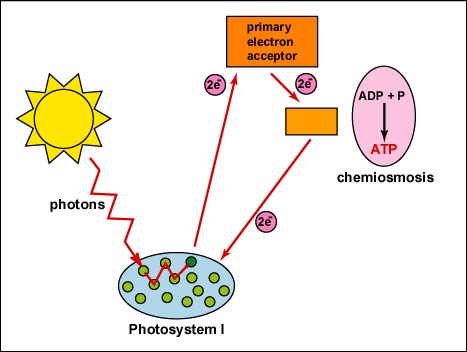
Cyclic photophosphorylation occurs less commonly in plants than noncyclic photophosphorylation in plants, probably when there is too little NADP+ available. It is also seen in certain photosynthetic bacteria. Cyclic photophosphorylation involves only Photosystem I and generates ATP but not NADPH. As the electrons from the reaction center of Photosystem I are picked up by the electron transport chain, they are transported back to the reaction center chlorophyll. As the electrons are transported down the electron transport chain, some of the energy released is used to pump protons across the thylakoid membrane from the stroma of the chloroplast to the thylakoid interior space producing a proton gradient or proton motive force. As the accumulating protons in the thylakoid interior space pass back across the thylakoid membrane to the stroma through ATP synthetase, this energy is used to generate ATP from ADP and Pi.
Last updated: Feb., 2021
Please send comments and inquiries to Dr.
Gary Kaiser